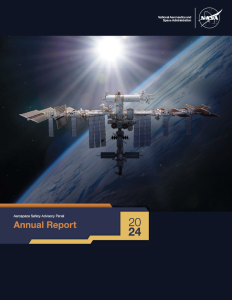

Paying more attention to employee well-being may help with Zoom fatigue. (Credit: Andrea Piacquadio from Pexels)
Employees who are unhappy with how they look are more likely to experience ‘Zoom fatigue’
EAST LANSING, Mich. — In an era where video meetings have become as routine as morning coffee, many of us have developed a complex relationship with our on-screen selves. New research reveals that our satisfaction with our facial appearance during workplace video calls may be a crucial factor in determining how exhausted we feel after these virtual interactions, and whether we’ll want to use video meeting platforms in the future.
A comprehensive study published in PLOS One examined 2,448 U.S.-based workers, with specific analyses conducted on smaller subsets ranging from 228 to 453 participants. American researchers sought to understand a pressing but underexplored question: how does facial appearance dissatisfaction affect video meeting fatigue and technology adoption?
Their findings uncovered a chain reaction: Workers who feel unhappy about their facial appearance are more likely to experience “Zoom fatigue,” which in turn drives them to use various appearance-enhancing features during video calls. This fatigue negatively impacted the perceived usefulness of video meeting platforms, which in turn lowered the intention to adopt these technologies.
Many professionals have experienced moments of self-consciousness during video meetings, perhaps noticing facial features they hadn’t focused on before, or becoming increasingly aware of how they appear on camera. The research suggests these aren’t isolated experiences but part of a broader pattern affecting workplace video communication.
The research team conducted a 15-minute survey examining how workplace professionals use various impression management features during video meetings. These features include touch-up tools to enhance video appearance, filters that partially cover the video image, avatars that replace the face entirely, and voice filters. The study found that participants reporting higher levels of facial appearance dissatisfaction were significantly more likely to use these features and experience video meeting exhaustion.


This pattern held true across different professional fields. The study included technical, scientific, and other professional workers who worked remotely at least part-time and regularly participated in virtual meetings. The researchers carefully balanced their sample across gender (men and women) and four racial categories (African American, Asian, Hispanic or Latino, and White) to ensure their findings represented diverse workplace experiences.
The fatigue these professionals reported manifests in multiple dimensions that the researchers measured: general exhaustion, visual fatigue, social exhaustion, emotional drain, and motivational fatigue. A person might feel physically tired despite minimal movement, emotionally drained from constant self-monitoring, or socially depleted from the unique demands of video interaction. These effects can accumulate over time, potentially impacting both individual well-being and workplace productivity.
What makes this study particularly significant is its examination of how people cope with appearance-related concerns in professional settings. Many participants turned to built-in platform features as digital coping mechanisms. This behavior mirrors traditional workplace impression management strategies, like choosing professional attire or grooming, but is translated into the virtual environment through technological tools.
When users experience high levels of video meeting fatigue, they perceive these platforms as less useful for their work. This decreased perceived usefulness directly affected their intention to use video meeting technologies in the future.


This chain reaction, from appearance concerns to fatigue to reduced technology adoption, has substantial implications for workplace practices. As organizations increasingly rely on virtual collaboration, understanding these psychological barriers becomes crucial for successful implementation. The research suggests that technical capabilities alone don’t determine adoption, human factors play a vital role.
Organizations might need to reconsider their video meeting policies and practices in light of these findings. Some workers might benefit from having more flexibility in how they present themselves during virtual meetings, whether through enhanced appearance features or options to customize their video presence in ways that make them more comfortable.
The study also revealed interesting patterns in how people use impression management features. Those experiencing higher levels of video meeting fatigue were more likely to engage with tools like video filters and avatars, suggesting these features might serve as coping mechanisms for appearance-related stress during virtual meetings.
The research challenges common assumptions about video meeting fatigue being primarily technical or cognitive. Instead, it demonstrates that our relationship with our own image significantly influences how we experience these virtual interactions. This finding suggests that solutions to video meeting fatigue might need to focus more on psychological comfort than technical improvements.
“Our study highlights that dissatisfaction with facial appearance contributes to Zoom fatigue, leading to reduced adoption of virtual meeting technologies. This dissatisfaction also drives the use of impression management features, emphasizing the need to address worker well-being in virtual communication environments,” study authors write, in a statement.
While video meeting platforms continue to evolve technically, this research suggests that successful virtual workplaces must also evolve in how they approach employee well-being. The intersection of self-image, technology fatigue, and workplace communication presents both challenges and opportunities for organizations navigating digital transformation.
Paper Summary
Methodology
The researchers conducted a 15-minute cross-sectional survey with 2,448 U.S.-based workers who regularly participated in virtual meetings. The sample balanced gender (men/women) and four racial categories (African American, Asian, Hispanic/Latino, White). For different analyses, they used three subsets of participants: 453 for examining relationships between facial appearance, fatigue, and impression management; 267 for analyzing technology adoption factors; and 228 for investigating impression management features. Participants answered questions about facial appearance satisfaction, video meeting fatigue, use of impression management features, and attitudes toward video meeting technology. The researchers used structural equation modeling to analyze relationships between these factors.
Results
The study revealed strong connections between facial appearance dissatisfaction and video meeting fatigue, with unhappy participants reporting higher fatigue levels. These individuals were more likely to use appearance-enhancing features in video meetings. Higher fatigue levels led to lower perceived usefulness of video meeting platforms, affecting future technology adoption intentions. The research also found that impression management features’ effectiveness didn’t significantly vary between high and low-use groups.
Limitations
The research was limited to U.S.-based participants, potentially missing cultural variations in other regions. The 15-minute survey design prevented establishing definitive cause-and-effect relationships between variables. Additionally, findings about impression management features might not apply equally across all video meeting platforms due to varying feature availability.
Discussion and Takeaways
Organizations should consider implementing strategies to reduce video meeting fatigue and support positive meeting experiences. This might include flexible camera use policies and supporting various appearance management approaches. The findings suggest that addressing psychological comfort in virtual meetings is crucial for successful technology adoption. Future research should explore how virtual meeting features can better support worker well-being and communication needs.
Funding and Disclosures
The National Science Foundation supported this study under grant FW-HTF-R: Collaborative Research: Virtual Meeting Support for Enhanced Well-Being and Equity for Game Developers (NSF Award Nos. 2128746, 2128803, 2128813, and 2128991 from SES Division). The NSF had no role in study design, data collection and analysis, publication decisions, or manuscript preparation.
Publication Information
This study was published in PLOS One on February 5, 2025, and authored by Chaeyun Lim, Rabindra Ratan, Maxwell Foxman, David Beyea, David Jeong, and Alex P. Leith. The paper is titled “Examining attitudes about the virtual workplace: Associations between zoom fatigue, impression management, and virtual meeting adoption intent.”








